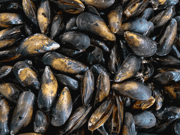
Standing in the seafood aisle, you might have felt completely overwhelmed by rows of fish with labels that seemed like a foreign language.
Words like 'Product of Australia,' 'sustainably sourced,' and unfamiliar logos can make choosing seafood feel like decoding a puzzle.
With prices climbing, knowing how to get the best value for your money has never been more important.
Understanding what those labels really mean
Australia has some of the strictest independently certified standards for seafood in the world, including MSC (Marine Stewardship Council), BAP (Best Aquaculture Practices), and ASC (Aquaculture Stewardship Council), which represent best practices for wild-caught and farmed seafood.
Dan Richards, CEO of Northern Territory's Humpty Doo Barramundi Farm, explained that 'sustainably' and 'responsibly' sourced were often used interchangeably, but the key was looking for independent certification rather than just trusting the company’s claim.
'A happy fish is a tasty fish'
When packaging displayed 'Product of Australia,' it meant the seafood came from Australian farms and all processing occurred locally.
Australian aquaculture operations had to meet strict standards covering environmental impact, worker conditions, and community effects, including limits on water quality, disease prevention, and restrictions on antibiotic use.
Imported seafood with labels such as 'Product of Thailand' or 'Product of Vietnam' might be safe to eat, but there was no guarantee it met the same environmental and social standards.
Certifications worth looking for
Shoppers were encouraged to look for the blue MSC logo for wild-caught fish or the green ASC label for farmed seafood, as these indicated certified sustainable fisheries or responsible farms.
Key seafood certifications to trust
ASC (Green logo): Aquaculture Stewardship Council for farmed seafood
MSC (Blue fish logo): Marine Stewardship Council for wild-caught seafood
BAP: Best Aquaculture Practices
Australian Barramundi Farmers Association: Industry certification scheme
Some products carried industry-specific certifications such as the Australian Barramundi Farmers Association sustainability scheme, and QR codes often provided links to more information about fishing or farming methods.
How to spot fresh, quality seafood
Richards advised that selecting seafood required more than just reading labels.
For barramundi, he suggested looking for bright silver skin with glistening pink to white flesh, which should never smell 'fishy' but rather like salt water.
Freshness indicators to remember
Fish should smell like salt water, never 'fishy'
Flesh should be firm when pressed
Prawns: avoid black legs or heads and freezer-burned product
Crabs/lobsters: thick, hard shells (buy alive or properly frozen)
Vacuum-sealed portions are a reliable option when in doubt
For prawns, black legs or heads indicated they had been sitting too long, and freezer-burn was a sign to avoid frozen prawns.
Vacuum-sealed portions were often fresher than seafood displayed on ice and clearly showed use-by dates.
Making your seafood dollar stretch
Fresh seafood lasted two to three days in the fridge, provided it was kept below 4 degrees Celsius during transport.
Richards recommended investing in a small cold brick for shopping bags, particularly in warmer months.
Frozen seafood could be just as delicious and nutritious as fresh, and often cost significantly less.
Fresh seafood not used within a couple of days could also be frozen at home to extend its shelf life, allowing shoppers to take advantage of bulk specials.
Red flags and warning signs
Although fish was generally low-risk, ageing seafood developed a distinct 'fishy' smell that signalled it was time to move on.
Understanding these quality indicators helped shoppers waste less money and choose seafood that would taste good at home.
Supporting Australian producers while saving money
Australian fishing and aquaculture industries primarily used MSC and ASC certification as proof of sustainability, with both considered 'gold standards' in media coverage.
Australian seafood could cost more upfront, but independent verification guaranteed quality and supported local communities.
Proper storage techniques also extended shelf life and improved value per meal.
Did you know?
Did you know? Around 3.3 billion people worldwide relied on seafood for at least 20 per cent of their animal protein consumption, making it one of the most important global food sources.
Choosing Australian seafood with recognised certifications not only delivered tastier products but ensured environmental and social standards were maintained for future generations.
Your next supermarket seafood shop
Armed with these insights, trips to the seafood section became less stressful.
Look for Australian certification logos, trust your senses for freshness, embrace frozen options, and keep everything properly chilled.
Whether planning a special dinner or adding more healthy protein to weekly meals, these tips helped shoppers make confident, cost-effective choices.
What This Means For You
Certification logos like MSC and ASC show that the seafood you are buying has been independently verified as sustainable or responsibly produced.
Freshness can be easily judged by appearance, smell, and firmness, so avoid products that smell 'fishy' or show signs of freezer-burn.
Frozen seafood is often just as nutritious and tasty as fresh, and it can save you money while lasting longer in your freezer.
Choosing Australian seafood not only guarantees quality but also supports local communities and ensures strict environmental and social standards are maintained.
For seniors, understanding these points means you can shop confidently, enjoy healthier meals, and get the best value for your money without compromising on quality.
How to buy seafood that's actually sustainable | CHOICE — Explains Australia’s strict independently certified standards for sustainable seafood, including MSC, BAP, and ASC.
https://www.choice.com.au/food-and-.../articles/sustainable-seafood-or-greenwashing
How to buy seafood that's actually sustainable | CHOICE — Details the Aquaculture Stewardship Council (ASC) and its strict standards for responsible seafood farming.
https://www.choice.com.au/food-and-.../articles/sustainable-seafood-or-greenwashing
How to buy seafood that's actually sustainable | CHOICE — Outlines the environmental, worker, and community standards Australian aquaculture operations must meet.
https://www.choice.com.au/food-and-.../articles/sustainable-seafood-or-greenwashing
How to buy seafood that's actually sustainable | CHOICE — Explains limits on water quality, disease prevention, and ecosystem impact for Australian seafood farms.
https://www.choice.com.au/food-and-.../articles/sustainable-seafood-or-greenwashing
Sustainable Seafood Awards Australia 2024 Winners—ASC Australia — Shows that blue MSC and green ASC labels indicate certified sustainable fisheries and responsible farms.
https://au.asc-aqua.org/news/sustainable-seafood-awards-australia-2024-winners/
How to buy seafood that's actually sustainable | CHOICE — Advises consumers to look for blue MSC and green ASC logos as proof of sustainability certification.
https://www.choice.com.au/food-and-.../articles/sustainable-seafood-or-greenwashing
How to buy seafood that's actually sustainable | CHOICE — Notes that some products carry industry-specific certifications like the Australian Barramundi Farmers Association sustainability scheme and QR codes for more information.
https://www.choice.com.au/food-and-.../articles/sustainable-seafood-or-greenwashing
Media representations of seafood certification in Australia: Mobilising sustainability standards to attack or defend the value of an industry—ScienceDirect — Reports that MSC and ASC certification are used by Australian industries as evidence of sustainability and are often called 'gold standards' in media.
https://www.sciencedirect.com/science/article/abs/pii/S0308597X20303341
Media representations of seafood certification in Australia: Mobilising sustainability standards to attack or defend the value of an industry—ScienceDirect — Explains how MSC labels were highlighted in media coverage to demonstrate industry sustainability practices.
https://www.sciencedirect.com/science/article/abs/pii/S0308597X20303341
ASC International—Aquaculture Stewardship Council — States that around 3.3 billion people worldwide rely on seafood for at least 20 per cent of animal protein consumption.
https://asc-aqua.org/
Have you ever walked past the seafood aisle unsure what to pick—and then been pleasantly surprised by what you discovered?







